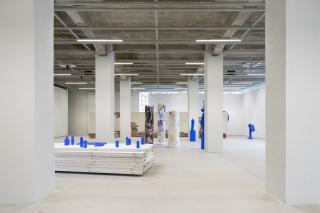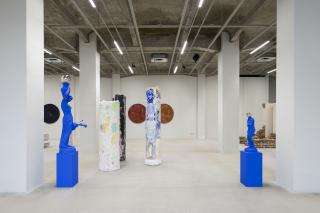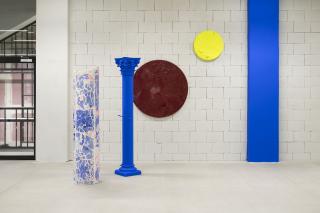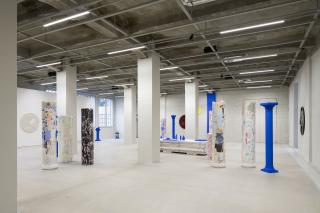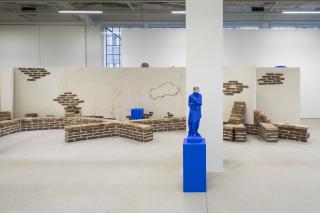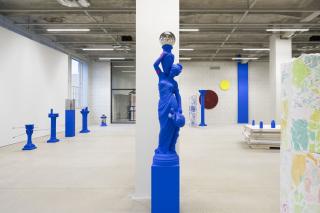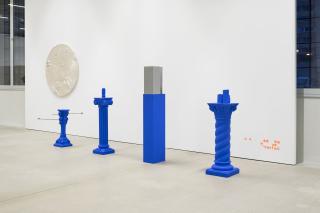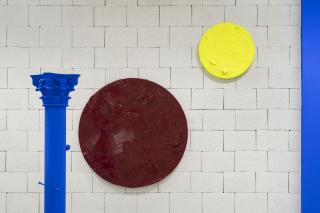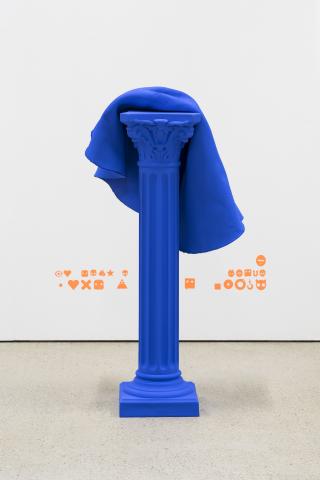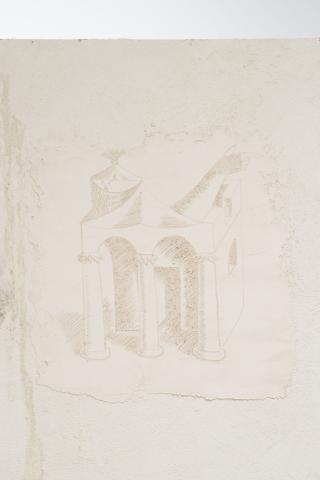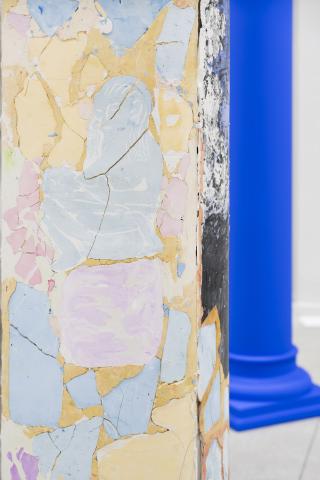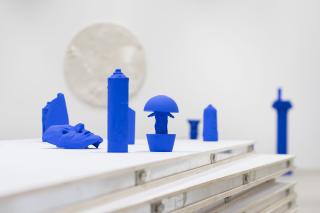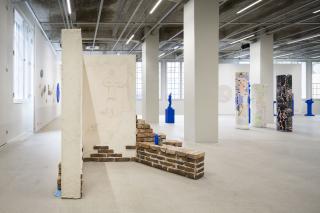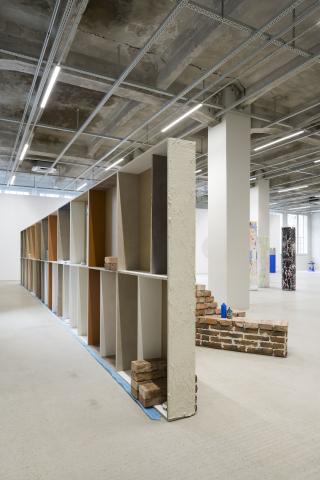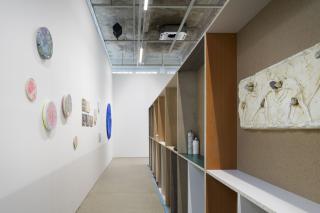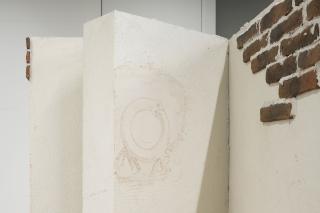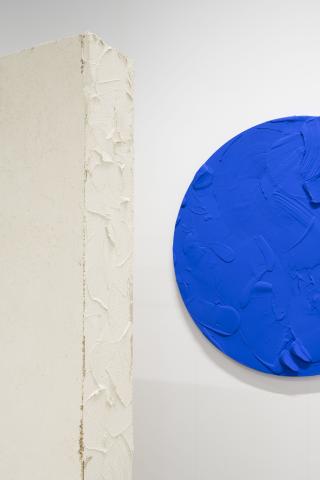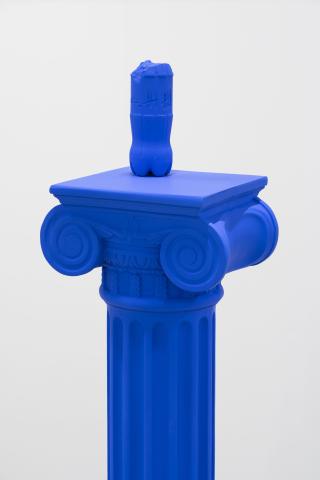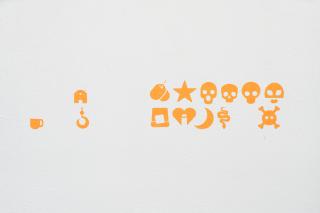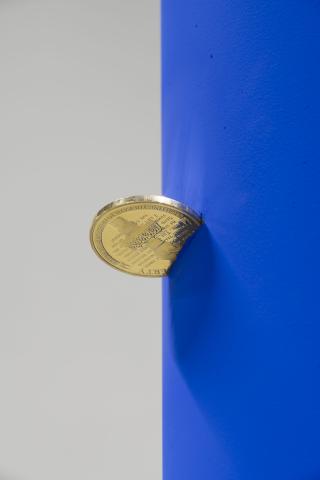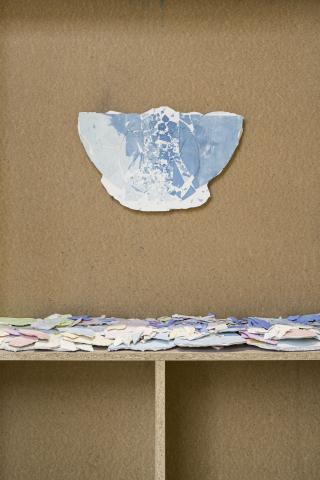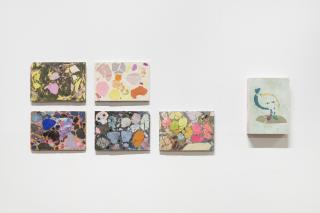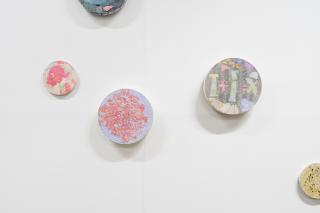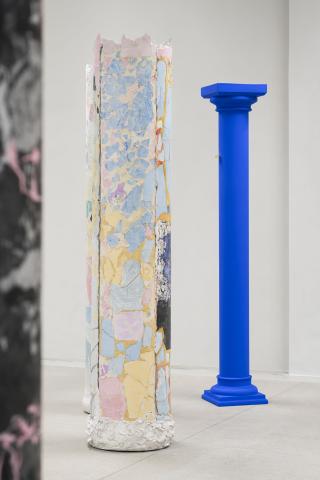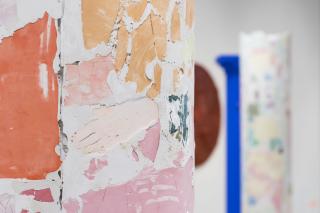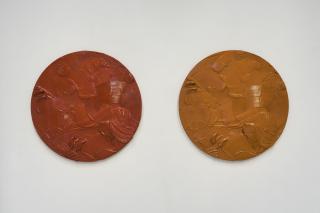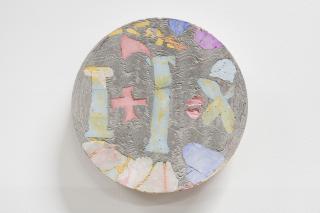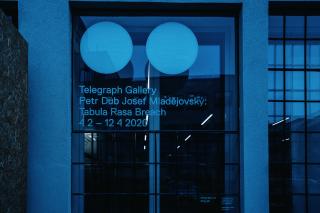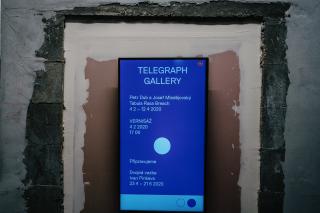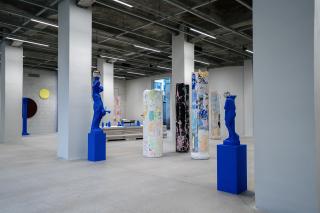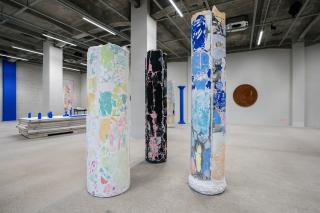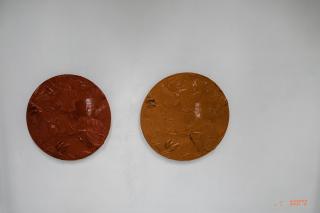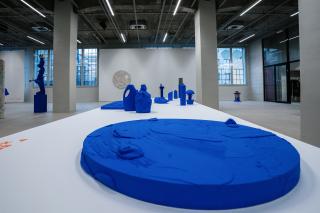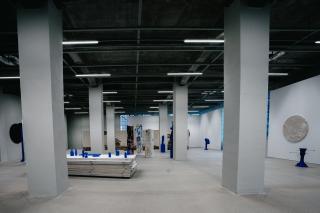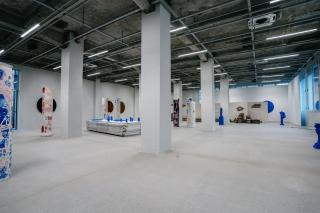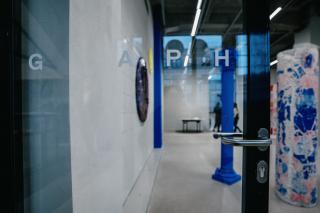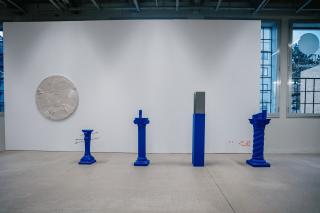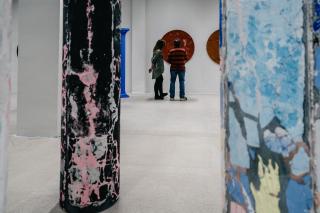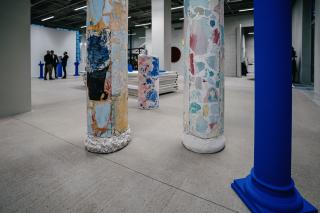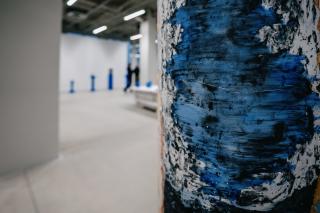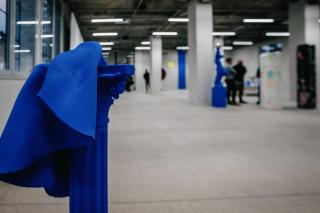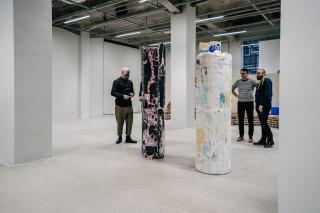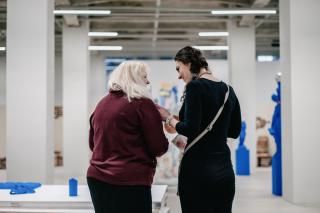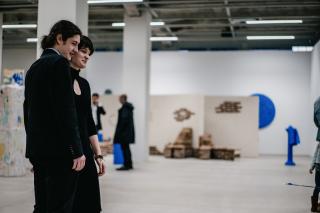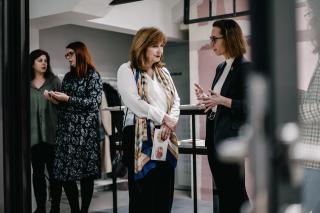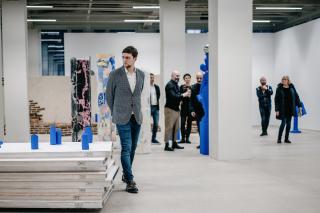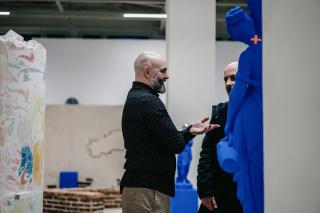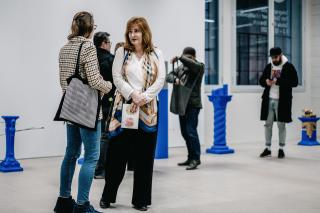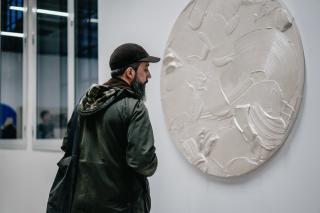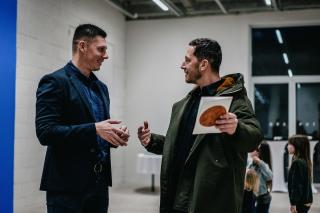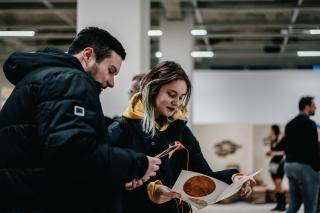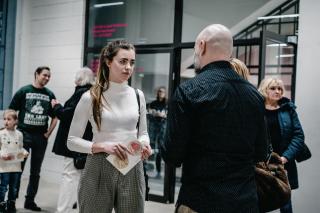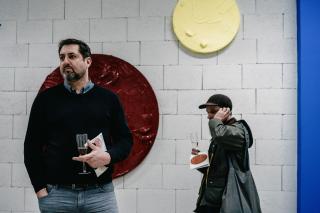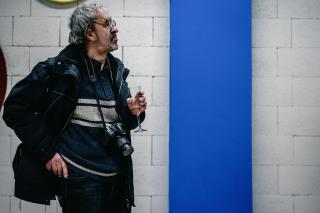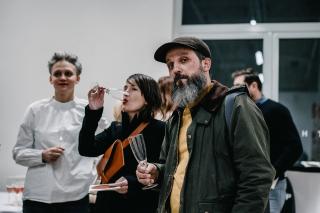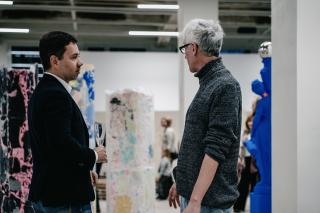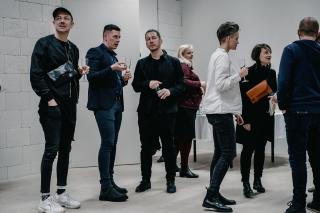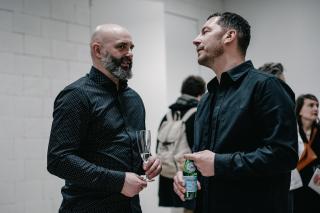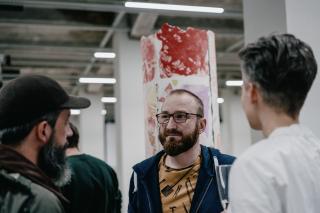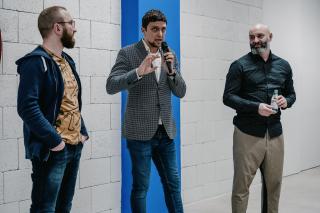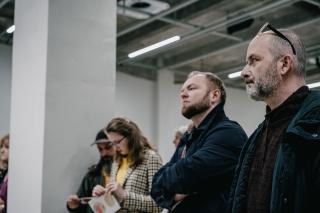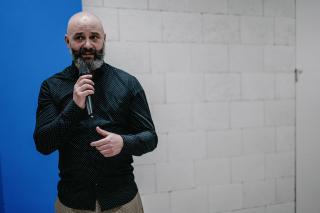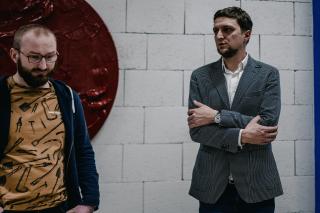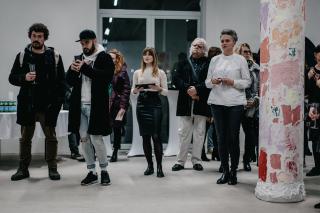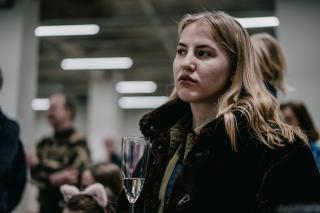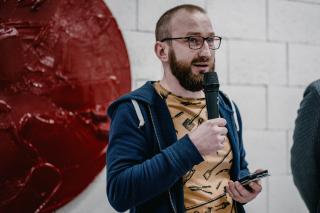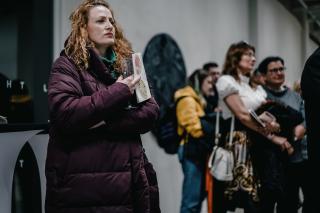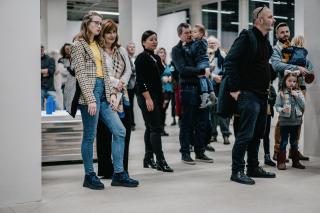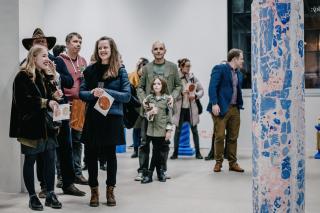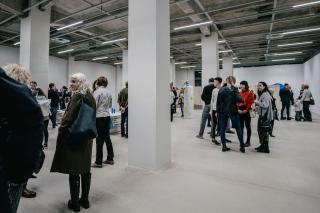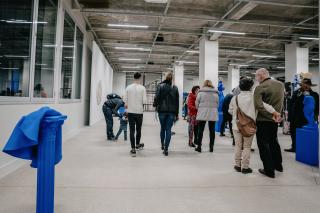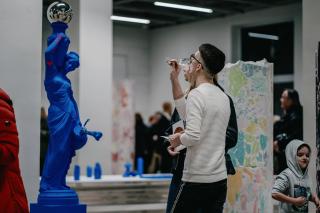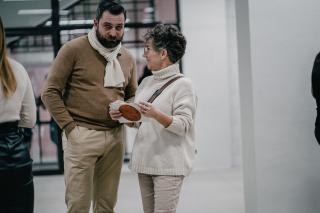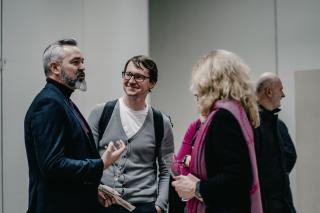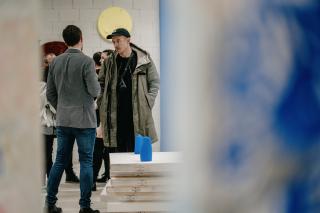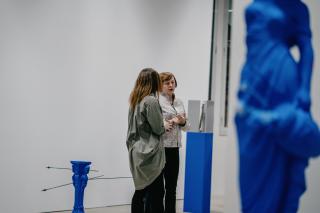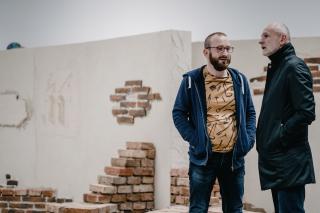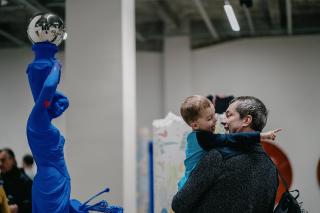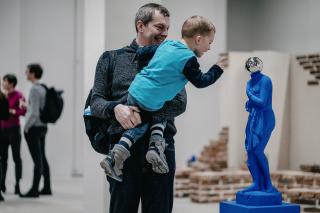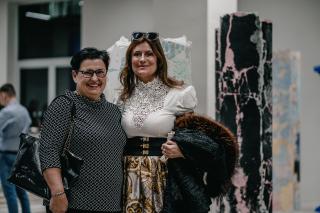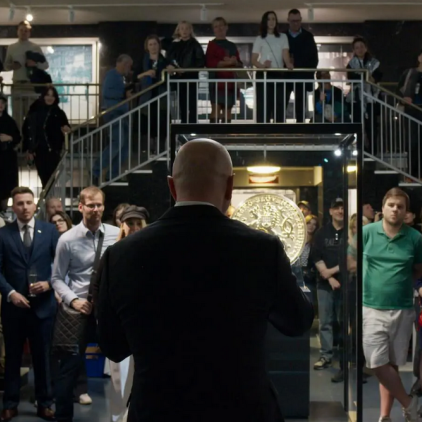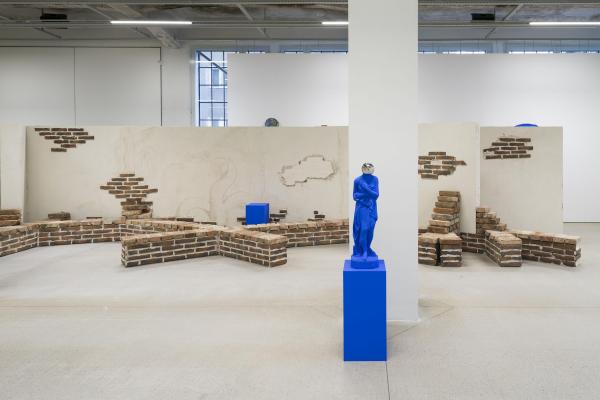
Open a sheet and assume its fullness as emptiness, assume its being black as being white: there is the focal point of what this exhibition is supposed to investigate, there is its objective turned to ambiguity.
The work of both artists Petr Dub and Josef Mladějovský has a common stylistic approach, or rather common expressive elements such as minimal shapes and the overlaying of painting and object. Is it the painting that makes the object or does it stand on the object?
By means of this exhibition, entitled Tabula Rasa Breach, the two artists combine their artistic skills to work on a next step which is represented by the research of both as well as by the intrinsic links between their work as well as the entanglements that result from it until we conceive a common point of reflection that is merely represented by the columns.
And here's the point where the ambiguity mentioned above, this violation of the tabula rasa, makes its way in the work of the two artists - in this common element of research.
Surely the emptiness, the indistinct persistence of the full and the empty, the violation of the emptiness that remembers all the time what is behind and what is in the front, this white sheet springing from the cyclicality of the objects are evident in the work of Petr Dub, especially in the way he treats the shape and objects resulting from his work: the obsessive form and repeated brushstrokes lead to a state of fusion where the painting becomes the object and the material becomes the form.
The work of Josef Mladějovský is mainly focused on the concept of truth, the prerogative of telling the true through the artistic work or on the alleged intentionality that this happens. The ambiguity persists here in playing with the truth. The abuse of the truth can lead to cancellation of its power and it the same time, the struggle for truth in the contemporary world seems to crumble in the face of the unclearness of our times.
From this substrate of ambiguity where the form is reformed and the given concept falters in the face of its own historical validity, there arise the columns in which the artists tell about the past, whisper the archetypes and break the fundamental events of the history of humanity, they sculpt the evolution of atheist principles, question the present not to obtain the monuments for an oracle but rather the columns that can be read from down to the top and vice versa in a continuous coming and going of constructions and deconstructions of new languages, of reinvented signs and repeating “tabula rasa”.
Curated by Domenico de Chirico
